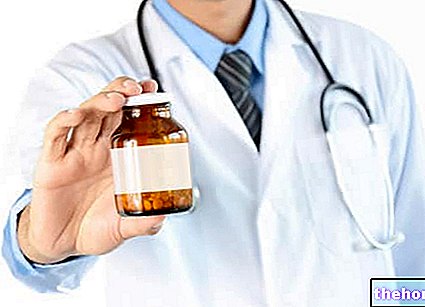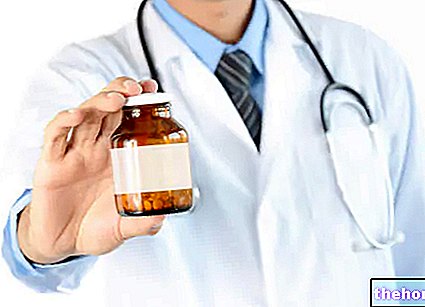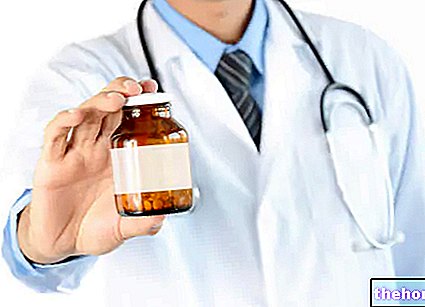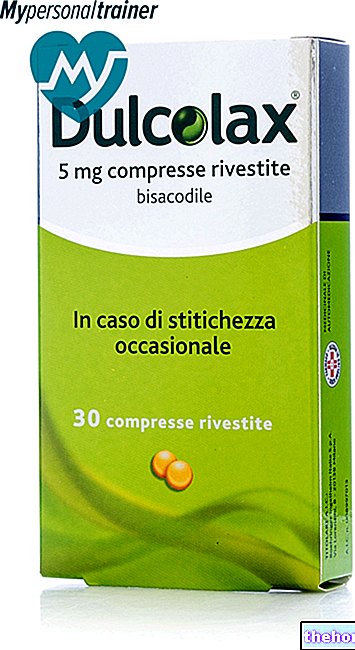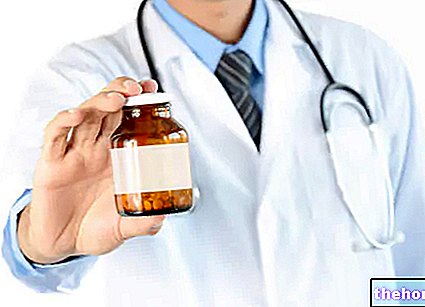Active ingredients: Fexofenadine (fexofenadine hydrochloride)
TELFAST 120 mg film-coated tablets
Telfast package inserts are available for pack sizes:- TELFAST 120 mg film-coated tablets
- TELFAST 180 mg film-coated tablets
Why is Telfast used? What is it for?
Telfast contains fexofenadine hydrochloride, which is an antihistamine.
Telfast 120 mg is used in adults and adolescents aged 12 years and over to relieve symptoms of hay fever (seasonal allergic rhinitis) such as sneezing, itchy nose, runny or blocked nose and itching, redness and eye tearing.
Contraindications When Telfast should not be used
Do not take Telfast
- if you are allergic to fexofenadine or any of the other ingredients of this medicine
Precautions for use What you need to know before you take Telfast
Talk to your doctor or pharmacist before taking Telfast if:
- suffer from liver or kidney problems,
- you currently or have previously had heart disease, as this type of medicine can cause a fast or irregular heartbeat,
- he is elderly.
If any of the above apply to you or if you are in any doubt, please tell your doctor before taking Telfast.
Interactions Which drugs or foods may change the effect of Telfast
Tell your doctor or pharmacist if you are taking or have recently taken or might take any other medicines.
Medicines used to combat digestive problems that contain aluminum and magnesium can affect the action of Telfast by decreasing the amount of the medicine absorbed.
It is recommended to observe an interval of approximately 2 hours between taking Telfast and the medication for digestive problems.
Warnings It is important to know that:
Pregnancy and breastfeeding
Ask your doctor or pharmacist for advice before taking any medicine.
Do not take Telfast during pregnancy unless necessary.
The use of Telfast is not recommended during breastfeeding.
Driving and using machines
Telfast is unlikely to affect the ability to drive or use machines. However, make sure the tablets do not make you drowsy or dizzy before driving or using machines.
Dose, Method and Time of Administration How to use Telfast: Posology
Always take this medicine exactly as your doctor has told you.
If in doubt, consult your doctor or pharmacist.
Adults and children of 12 years of age or older
The recommended dose is one tablet (120 mg) once a day.
Take the tablet with water before meals.
Overdose What to do if you have taken too much Telfast
If you take more Telfast than you should
If you take too many tablets, contact your doctor or the nearest emergency department immediately. Symptoms of overdose in adults are dizziness, sleepiness, fatigue and dry mouth.
If you forget to take Telfast
Do not take a double dose to make up for a forgotten tablet. Take your next dose at the same time you usually take it, as prescribed by your doctor.
If you stop taking Telfast
Talk to your doctor if you intend to stop taking Telfast before finishing the course of treatment. If you stop taking Telfast sooner, your symptoms may return.
If you want more information on the use of this medicine, ask your doctor or pharmacist.
Side Effects What are the side effects of Telfast
Like all medicines, this medicine can cause side effects, although not everybody gets them.
Tell your doctor immediately and stop taking Telfast if this occurs
- swelling of the face, lips, tongue or throat and difficulty breathing, as these signs may be indicative of a serious allergic reaction.
Common side effects may affect up to 1 in 10 people:
- drowsiness
- feeling sick (nausea)
- dizziness.
Uncommon side effects may affect up to 1 in 100 people:
- tiredness
- drowsiness.
Additional side effects (frequency not known: cannot be estimated from the available data) that may occur are:
- difficulty falling asleep (insomnia)
- sleep disorders
- nightmares
- nervousness
- rapid or irregular heartbeat
- diarrhea
- rash and itching
- urticaria
- severe allergic reactions which can cause swelling of the face, lips, tongue or throat, flushing, chest tightness and difficulty breathing.
Reporting of side effects
If you get any side effects, talk to your doctor or pharmacist. This includes any possible side effects not listed in this leaflet. You can also report side effects directly via the national reporting system at https://www.aifa.gov.it/content/segnalazioni-reazioni-avverse
By reporting side effects you can help provide more information on the safety of this medicine.
Expiry and Retention
Keep this medicine out of the sight and reach of children.
Do not use this medicine after the expiry date which is stated on the carton after (EXP).
The expiry date refers to the last day of the month.
This medicinal product does not require any special storage conditions.
Do not throw any medicines via wastewater or household waste. Ask your pharmacist how to throw away medicines you no longer use. This will help protect the environment.
What Telfast 120 mg contains
The active ingredient is fexofenadine hydrochloride. Each tablet contains 120 mg of fexofenadine hydrochloride.
The other ingredients are:
- Tablet core: microcrystalline cellulose, pregelatinised maize starch, croscarmellose sodium, magnesium stearate.
- Film coating: hypromellose, povidone, titanium dioxide (E171), anhydrous colloidal silica, macrogol 400 and iron oxide (E172).
What Telfast 120 mg looks like and contents of the pack
Telfast 120 mg film-coated tablets are peach-colored, capsule-shaped with "012" debossed on one side and "e" on the other.
Telfast comes in blister packs.
Each tablet is packed in blisters. Telfast is available in packs of 2 (sample), 7, 10, 15, 20, 30, 50, 100 and 200 (as 10x20) tablets per box.
Not all pack sizes may be marketed.
Source Package Leaflet: AIFA (Italian Medicines Agency). Content published in January 2016. The information present may not be up-to-date.
To have access to the most up-to-date version, it is advisable to access the AIFA (Italian Medicines Agency) website. Disclaimer and useful information.
01.0 NAME OF THE MEDICINAL PRODUCT
TELFAST 120 MG TABLETS COATED WITH FILM
02.0 QUALITATIVE AND QUANTITATIVE COMPOSITION
Each tablet contains 120 mg of fexofenadine hydrochloride, equivalent to 112 mg of fexofenadine.
For the full list of excipients, see section 6.1.
03.0 PHARMACEUTICAL FORM
Film-coated tablets.
Peach-colored, capsule-shaped, film-coated tablets debossed with "012" on one side and an "e" on the other.
04.0 CLINICAL INFORMATION
04.1 Therapeutic indications
Telfast 120 mg is indicated in adults and children aged 12 years and over for the symptomatic treatment of seasonal allergic rhinitis.
04.2 Posology and method of administration
Dosage
Adults
The recommended dose of fexofenadine hydrochloride for adults is 120 mg once a day, before meals.
Fexofenadine is a pharmacologically active metabolite of terfenadine.
Pediatric population
Children aged 12 years and over
The recommended dose of fexofenadine hydrochloride for children aged 12 years and over is 120 mg once a day, before meals.
Children under 12 years of age
The efficacy and safety of fexofenadine hydrochloride 120 mg have not been studied in children below 12 years of age.
In children 6 to 11 years of age: fexofenadine hydrochloride 30 mg tablets is the appropriate formulation for administration and dosage in this population.
Special populations
Studies performed in groups of patients at risk (elderly, patients with renal or hepatic insufficiency) indicate that it is not necessary to adjust the dose of fexofenadine hydrochloride in these patients.
04.3 Contraindications
The product is contraindicated in patients with hypersensitivity to the active substance or to any of the excipients listed in section 6.1.
04.4 Special warnings and appropriate precautions for use
As with most new medicinal products, data in elderly subjects and in patients with impaired renal or hepatic function are limited. Fexofenadine hydrochloride should be administered with caution to such groups of subjects.
Patients with previous or current cardiovascular disease should be advised that antihistamines, as a class of medicinal products, have been associated with adverse reactions such as tachycardia and palpitations (see section 4.8).
04.5 Interactions with other medicinal products and other forms of interaction
Fexofenadine does not undergo hepatic biotransformation and therefore will not interact with other medicinal products at the level of hepatic mechanisms.
Co-administration of fexofenadine hydrochloride and erythromycin or ketoconazole has been found to increase the plasma levels of fexofenadine by 2-3 fold. These changes were not accompanied by any effect on the QT interval and were not associated with any increase in adverse reactions compared to that observed with the same medicinal products administered individually.
Animal studies have shown that the increase in plasma levels of fexofenadine observed after concomitant treatment with erythromycin or ketoconazole appears to be caused by an increase in gastrointestinal absorption and a decrease in both biliary excretion and gastrointestinal secretion, respectively.
No interaction was observed between fexofenadine and omeprazole. However, administration of an antacid containing aluminum and magnesium hydroxide 15 minutes prior to administration of fexofenadine hydrochloride resulted in a reduction in bioavailability, most likely due to binding in the gastrointestinal tract. An interval of 2 hours is recommended between the administration of fexofenadine hydrochloride and antacids containing aluminum and magnesium hydroxide.
04.6 Pregnancy and lactation
Pregnancy
There are no adequate data on the use of fexofenadine hydrochloride in pregnant women. Limited animal studies do not indicate direct or indirect harmful effects with respect to pregnancy, embryonal / fetal development, parturition or postnatal development (see 5.3). Fexofenadine hydrochloride does not it should be used during pregnancy unless absolutely necessary.
Feeding time
There are no data on the concentration in breast milk after administration of fexofenadine hydrochloride. However, when terfenadine was administered to nursing mothers, fexofenadine was found to pass into breast milk. Therefore the use of fexofenadine hydrochloride is not recommended during breastfeeding.
04.7 Effects on ability to drive and use machines
Based on the pharmacodynamic profile and adverse reaction events reported, fexofenadine hydrochloride tablets are unlikely to produce effects on the ability to drive or use machines. In objective tests, Telfast has not been shown to have significant effects on central nervous system function. This means that patients can drive or perform activities that require concentration. However, in order to identify sensitive people who may have an unusual reaction to medicines, it is advisable to check the individual response before driving or performing complex tasks.
04.8 Undesirable effects
The following frequency class was used when applicable: very common ≥ 1/10; common ≥ 1/100 e
Within each frequency group, undesirable effects are presented in order of decreasing severity.
In adults, the following undesirable effects were reported in clinical trials, with an incidence similar to that seen with placebo:
Nervous system disorders
Common: headache, somnolence, dizziness.
Gastrointestinal disorders
Common: nausea.
General disorders and administration site conditions
Uncommon: fatigue.
In adults, the following undesirable effects have been reported in post-marketing surveillance. The frequency with which they occur is not known (an estimate cannot be made from the available data):
Disorders of the immune system
Hypersensitivity reactions with manifestations such as angioedema, chest tightness, dyspnoea, hot flashes and systemic anaphylaxis.
Psychiatric disorders
Insomnia, nervousness, sleep disturbances or nightmares / excess of dreams (paronyria).
Cardiac pathologies
Tachycardia, palpitations.
Gastrointestinal disorders
Diarrhea.
Skin and subcutaneous tissue disorders
Rash, hives and itching.
Reporting of suspected adverse reactions.
Reporting of suspected adverse reactions occurring after authorization of the medicinal product is important as it allows continuous monitoring of the benefit / risk balance of the medicinal product. Healthcare professionals are asked to report any suspected adverse reactions via the national reporting system. "address https://www.aifa.gov.it/content/segnalazioni-reazioni-avverse.
04.9 Overdose
Dizziness, somnolence, fatigue and dry mouth have been reported following overdose with fexofenadine hydrochloride.Single doses up to 800 mg and doses up to 690 mg twice daily for one month or 240 mg once daily for one year have been administered to healthy volunteers without causing clinically significant adverse reactions when compared to placebo. The maximum tolerated dose of fexofenadine hydrochloride has not been established.
Standard measures should be considered to remove unabsorbed medicinal product. Supportive and symptomatic treatment is recommended. Hemodialysis does not effectively remove fexofenadine hydrochloride from the blood.
05.0 PHARMACOLOGICAL PROPERTIES
05.1 Pharmacodynamic properties
Pharmacotherapeutic group: antihistamines for systemic use.
ATC code: R06AX26.
Mechanism of action
Fexofenadine hydrochloride is a non-sedating anti-H1 antihistamine. Fexofenadine is a pharmacologically active metabolite of terfenadine.
Clinical efficacy and safety
In men, skin challenge studies with histamine (wheal and erythema) following single or twice daily administration of fexofenadine hydrochloride have shown that the antihistamine effect of the drug occurs within one hour, reaching the maximum level. at the sixth hour and lasting for 24 hours. There was no evidence of tolerance to these effects after 28 days of treatment. A positive dose-response relationship was detected with oral doses ranging from 10 mg to 130 mg. In this activity model antihistamine, doses of at least 130 mg were found to be required to achieve a consistent effect that was maintained for more than 24 hours. The maximum inhibition of the wheal area and erythema was greater than 80%. Clinical studies conducted in seasonal allergic rhinitis have shown that a dose of 120 mg is sufficient for 24 hour efficacy.
No significant changes in QTc intervals were observed in patients with seasonal allergic rhinitis treated with fexofenadine hydrochloride at doses up to 240 mg twice daily for 2 weeks compared to those treated with placebo. In addition, no significant changes in QTc intervals were detected in healthy subjects administered fexofenadine hydrochloride at doses up to 60 mg twice daily for 6 months, 400 mg twice daily for 6.5 days and 240 mg once. once a day for one year compared to those who were given placebo. Fexofenadine, at concentrations 32 times the therapeutic concentration in humans, had no effect on the delayed rectification K + channel cloned from human heart.
Fexofenadine hydrochloride (5-10 mg / kg orally) inhibited antigen-induced bronchospasm in sensitized guinea pigs, as well as histamine release from peritoneal mast cells at concentrations above therapeutic levels (10-100 μM).
05.2 "Pharmacokinetic properties
Absorption
Fexofenadine hydrochloride is rapidly absorbed following oral administration, with a Tmax occurring approximately 1 to 3 hours after administration. The mean Cmax value was approximately 427 ng / mL following administration of 120 mg once daily.
Distribution
Fexofenadine is 60-70% bound to plasma proteins.
Biotransformation and elimination
The metabolism (hepatic and non-hepatic) of fexofenadine is negligible as it was the only relevant compound identified in urine and faeces in both animals and humans. The plasma concentration profile of fexofenadine follows a bi-exponential decline with a final elimination half-life after repeated administration ranging from 11 to 15 hours. Pharmacokinetics after both single and repeated administration are linear up to doses of 120 mg twice daily. A dose of 240 mg, twice daily, produced a slightly higher than non-proportional (8.8%) increase in the area under the steady-state curve, indicating that the pharmacokinetics of fexofenadine are practically linear at doses between 40 and 240 mg taken daily.The major route of elimination is believed to be biliary excretion, while up to 10% of the dose taken is eliminated unchanged in the urine.
05.3 Preclinical safety data
The dog tolerated 450 mg / kg administered twice daily for 6 months and showed no manifestation of toxicity except sporadic emesis. In addition, in the single dose studies in rodents and dogs, no treatment-related gross findings were observed after necropsy.
Tissue distribution studies in rats with labeled fexofenadine hydrochloride indicated that fexofenadine does not cross the blood brain barrier.
Various mutagenicity tests in vitro and in vivo have documented that fexofenadine hydrochloride does not exhibit mutagenic properties.
The carcinogenic potential of fexofenadine hydrochloride was evaluated using studies with terfenadine with the help of supportive pharmacokinetic studies, which documented exposure to fexofenadine hydrochloride (by means of plasma AUC values). No signs of carcinogenicity were found in rats and mice treated with terfenadine (up to 150 mg / kg / day).
In a reproductive toxicity study in mice, fexofenadine hydrochloride did not impair fertility, did not demonstrate teratogenic action, and did not alter pre- or postnatal development.
06.0 PHARMACEUTICAL INFORMATION
06.1 Excipients
Core of the tablet
Microcrystalline cellulose; pregelatinised maize starch; croscarmellose sodium; magnesium stearate.
Film coating
Hypromellose; povidone; titanium dioxide (E171); anhydrous colloidal silica; macrogol 400; iron oxide (E172).
06.2 Incompatibility
Not relevant.
06.3 Period of validity
3 years.
06.4 Special precautions for storage
The medicinal product does not require special storage conditions.
06.5 Nature of the immediate packaging and contents of the package
PVC / PE / PVDC / Al or PVC / PVDC / Al blisters packed in cardboard boxes of 2 (sample), 7, 10, 15, 20, 30, 50, 100 and 200 (as 10 x 20) tablets for box.
Not all pack sizes may be marketed.
06.6 Instructions for use and handling
No special instructions.
07.0 MARKETING AUTHORIZATION HOLDER
Sanofi-aventis S.p.A.
V.le L. Bodio 37 / b - IT-20158 Milan
08.0 MARKETING AUTHORIZATION NUMBER
A.I.C. n. 033303177 - 7 film-coated tablets in PVC / PE / PVDC / Al blisters
A.I.C. n. 033303189 - 10 film-coated tablets in PVC / PE / PVDC / Al blisters
A.I.C. n. 033303191 - 15 film-coated tablets in PVC / PE / PVDC / Al blisters
A.I.C. n. 033303049 - 20 film-coated tablets in PVC / PE / PVDC / Al blisters
A.I.C. n. 033303203 - 30 film-coated tablets in PVC / PE / PVDC / Al blisters
A.I.C. n. 033303215 - 50 film-coated tablets in PVC / PE / PVDC / Al blisters
A.I.C. n. 033303227 - 100 film-coated tablets in PVC / PE / PVDC / Al blisters
A.I.C. n. 033303239 - 200 film-coated tablets in PVC / PE / PVDC / Al blisters
A.I.C. n. 033303304 - 7 film-coated tablets in PVC / PVDC / Al blisters
A.I.C. n. 033303316 - 10 film-coated tablets in PVC / PVDC / Al blisters
A.I.C. n. 033303328 - 15 film-coated tablets in PVC / PVDC / Al blisters
A.I.C. n. 033303330 - 20 film-coated tablets in PVC / PVDC / Al blisters
A.I.C. n. 033303342 - 30 film-coated tablets in PVC / PVDC / Al blisters
A.I.C. n. 033303355 - 50 film-coated tablets in PVC / PVDC / Al blisters
A.I.C. n. 033303367 - 100 film-coated tablets in PVC / PVDC / Al blisters
A.I.C. n. 033303379 - 200 film-coated tablets in PVC / PVDC / Al blisters
09.0 DATE OF FIRST AUTHORIZATION OR RENEWAL OF THE AUTHORIZATION
13.10.1997 / June 2006
10.0 DATE OF REVISION OF THE TEXT
February 2014

